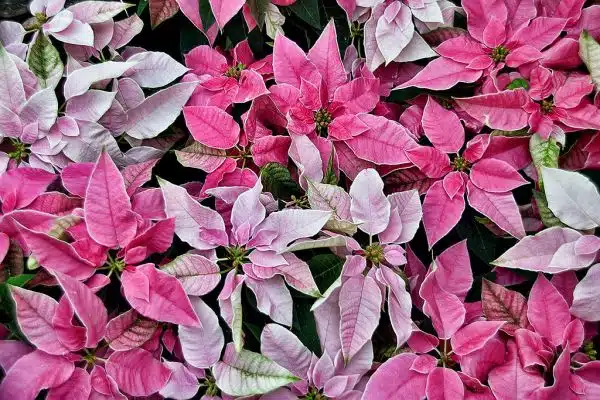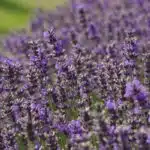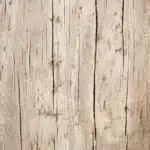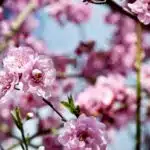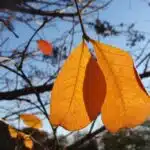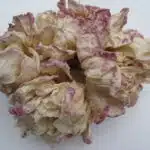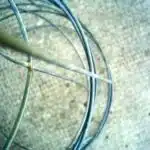Poinsettias are a popular decorative plant during the holiday season, known for their vibrant red and green foliage. However, in order to maintain their beauty and prolong their lifespan, proper pruning techniques must be employed. The process of pruning involves removing dead or decaying plant material and shaping the plant to encourage healthy growth.
As a horticulturalist, it is important to understand the principles behind successful pruning of poinsettias. This article will provide expert advice on how to prune poinsettias effectively, including identifying when and where to make cuts, as well as tips for promoting new growth and maintaining overall health. By following these guidelines, gardeners can ensure that their poinsettias remain beautiful throughout the holiday season and beyond.
Understanding The Importance Of Pruning In Horticulture
Pruning is an essential aspect of horticulture that can have a significant impact on the health and growth of plants. It is similar to pruning a tree, but instead of removing branches, it involves cutting back parts of the plant such as leaves, stems, and flowers. Like sharpening a knife before using it, pruning is an important step in maintaining your poinsettia’s health and beauty.
There are several benefits of pruning your poinsettia, including promoting new growth, preventing disease and pests from spreading, and improving overall plant structure. Pruning also helps remove any dead or damaged parts of the plant that could otherwise be draining resources from healthy sections. Furthermore, by removing spent blooms or leaves that are blocking light from reaching other areas of the plant, you can encourage more even growth.
When it comes to pruning techniques for poinsettias specifically, there are a few things to keep in mind. First, always use clean tools to avoid introducing any pathogens or bacteria into the plant. It’s also important to make cuts at a 45-degree angle to prevent water from pooling on cut surfaces. Finally, avoid over-pruning your poinsettia as this can cause stress and lead to stunted growth or even death.
Identifying The Right Time To Prune Your Poinsettia
Timing is everything when it comes to pruning your poinsettia. The optimal time for pruning is during early spring, just after the winter holiday season has ended. This timing benefits the plant in several ways. Firstly, it enables the plant to recover from any damage caused during the winter season. Secondly, pruning at this time allows new growth to emerge before the onset of summer.
It’s important to remember that poinsettias are seasonal plants and follow natural cycles. As such, they tend to go dormant during late fall and early winter as a response to shorter daylight hours and cooler temperatures. Once these environmental factors change during early spring, poinsettias start awakening from their dormancy period and begin showing new growth. This is why pruning them during this time helps stimulate healthy growth.
By choosing the right timing for pruning your poinsettia, you can ensure its long-term health and vitality. Understanding seasonal cycles and how they affect your plant is crucial in making informed decisions about caring for it properly. In the next section, we’ll explore how choosing the right pruning tools can further enhance your plant’s well-being.
Choosing The Right Pruning Tools
When it comes to pruning your poinsettia, it is essential to have the right tools for the job. The most common pruning tool for indoor plants is a pair of pruning scissors. When choosing pruning scissors, look for a pair that fits comfortably in your hand and has sharp blades to make clean cuts. Avoid using dull blades as they can cause damage to the plant.
For larger branches that cannot be cut with pruning scissors, you may need to use a pruning saw. A pruning saw is ideal for thicker branches and stems, which require more force than scissors can provide. Look for a saw with sturdy teeth that can cut through wood effortlessly but still leaves a smooth finish on the plant’s surface.
Using the right tools not only makes pruning easier but also ensures that you do not harm your poinsettia while trimming it. Make sure your equipment is clean and well-maintained before starting any work on your plant. By selecting appropriate tools and keeping them in good condition, you are taking one step closer to giving your poinsettia the care it deserves.
Transition: Now that you have selected the right tools for pruning your poinsettia, let’s move on to preparing your plant for this process.
Preparing Your Poinsettia For Pruning
Before pruning your poinsettia, it is important to prepare it properly. First, choose the right pruning technique that suits your plant’s growth habit and desired shape. For instance, if you want a bushy plant with many branches, pinch back the tips of new growth regularly to encourage lateral branching. If your plant is leggy or has long stems, you may need to prune more severely to reduce its height and promote bushiness.
Secondly, make sure you have the right tools for the job. Sharp and clean pruning shears are essential to prevent damage to the plant tissue and spread of diseases. Blunt or dirty tools can crush or tear the stems and leaves, leaving open wounds that can become infected by fungi or bacteria. Also, sterilize your tools with rubbing alcohol or a disinfectant solution before and after pruning each plant to avoid cross-contamination.
Lastly, anticipate potential problems that may arise during or after pruning. Watch out for signs of stress such as wilting, yellowing, or dropping leaves in response to over-pruning or cutting too close to healthy tissue. To minimize stress on your poinsettias after pruning, water them well before and after the process and avoid exposing them to direct sunlight or extreme temperatures. If you notice any signs of infection or disease after pruning, isolate the affected plants immediately and treat them accordingly.
As you prepare your poinsettias for pruning by choosing appropriate techniques, getting proper tools ready and anticipating potential problems; it is important to also be mindful of removing dead or damaged branches from your plants.
Removing Dead Or Damaged Branches
Removing Dead or Damaged Branches:
Pruning a poinsettia is an important aspect of maintaining the plant’s health and appearance. One key step in pruning is to remove any dead or damaged branches. These branches can be identified by their brown or black coloration, lack of leaves, and brittle texture. Removing them not only improves the overall aesthetics of the plant but also prevents disease from spreading.
When removing dead or damaged branches, it is crucial to use clean and sharp pruning shears. This helps prevent damage to the healthy parts of the plant and reduces the risk of introducing infection. After each cut, it is recommended to sanitize the pruning shears with rubbing alcohol or a bleach solution before making another cut. This promotes healthy growth and minimizes the chances of future problems.
Overall, removing dead or damaged branches from a poinsettia is an essential part of its care that should not be overlooked. Doing so improves both its appearance and health by preventing disease and promoting healthy growth. By using clean and sharp tools for pruning, we can ensure that our plants stay healthy for years to come.
With dead or damaged branches removed, it’s time to address overgrown ones through cutting back.
Cutting Back Overgrown Branches
To maintain the aesthetics of your poinsettia, it is crucial to know how to prune it properly. Pruning techniques vary depending on the growth pattern and shape of the plant. When cutting back overgrown branches, always use sharp and clean tools to avoid damaging the plant.
One common technique for pruning an overgrown poinsettia is to cut back all stems by one-third in spring after blooming. This technique helps to encourage new growth and a fuller plant. For poinsettias that have become leggy or sparse, remove only the top one-third of each stem, leaving some foliage at the base. This will promote bushier growth and prevent the plant from becoming too tall.
Another technique is called pinching, which involves removing just the tip of a stem with your fingers or pruning shears. Pinching can help maintain a more compact shape for your poinsettia. Be sure to pinch regularly throughout the growing season for best results.
Pruning your poinsettia can be a simple task if done correctly. However, it is important not to overdo it as this can harm the plant’s health and overall appearance. With proper pruning techniques in mind, you can keep your poinsettia looking its best year-round while promoting optimal growth. In the next section, we will discuss shaping your poinsettia for optimal growth without causing damage.
Shaping Your Poinsettia For Optimal Growth
Cutting back overgrown branches is an important step in maintaining the health and appearance of your poinsettia plant. However, to promote optimal growth, shaping techniques must also be employed. These techniques involve pruning your poinsettia in a way that encourages balanced growth and prevents overcrowding.
Pruning frequency will depend on the size of your poinsettia and how quickly it grows. As a general rule, you should prune your plant every six to eight weeks during its active growing season. Pruning during this time will encourage new growth and promote bushiness. If you wait too long between prunings, you risk removing too much foliage at once, which can be detrimental to the plant’s health.
To shape your poinsettia effectively, start by identifying any long or leggy stems that are detracting from the overall appearance of the plant. Using clean pruning shears, cut these stems back to just above a leaf node. This will stimulate new growth at the node and prevent unsightly bare spots on the stem. Repeat this process as needed throughout the growing season to keep your poinsettia looking neat and tidy.
Transition: While pruning and shaping are important for maintaining your poinsettia’s overall health and appearance, pinching back is another technique that can help ensure optimal growth.
Pinching Back Your Poinsettia
Pruning is an essential part of maintaining your poinsettia’s health and appearance. Proper pruning techniques are vital to ensure that your plant remains healthy and produces beautiful blooms. Pinching back is one of the most common forms of pruning, which involves removing the tips of new growth with your fingertips.
The benefits of pinching are numerous. It encourages bushy growth by promoting lateral shoots, which results in a fuller and more attractive plant. Pinching back also directs the plant’s energy towards developing thicker stems and leaves, resulting in stronger plants that can withstand environmental stresses better. Furthermore, regular pinching back will help to prevent leggy growth and encourage more abundant flowering.
When pinching back your poinsettia, it’s important to use clean, sharp scissors or pruning shears. Cut just above a leaf node or bud at a 45-degree angle to promote healing and prevent disease. Avoid cutting too much at once; instead, pinch back small amounts regularly over time. Remember to dispose of any pruned material properly to prevent the spread of pests and diseases.
Transition: Now that you’ve learned about the benefits of pinching back your poinsettia let’s move on to the next step in caring for your plant: fertilizing after pruning.
Fertilizing Your Poinsettia After Pruning
- When selecting fertilizer for poinsettias, it is important to consider the specific needs of the plant.
- The most important factor in determining the correct type of fertilizer is the soil pH.
- Fertilizing poinsettias should be done carefully and according to package instructions to prevent over-fertilization.
- Applying the fertilizer to the soil around the base of the poinsettia is the best method for ensuring it is properly absorbed.
- After fertilization, it is important to monitor the poinsettia to determine if additional fertilizer is needed.
- If additional fertilizer is needed, a different type of fertilizer may be necessary depending on the plant’s current needs.
Choosing Fertilizer
When it comes to fertilizing your poinsettia after pruning, selecting the right fertilizer is crucial for promoting healthy growth and vibrant blooms. Fertilizer selection should be based on the nutrient requirements of the plant, which can vary depending on factors such as soil type and pH levels. A balanced fertilizer with equal parts nitrogen, phosphorus, and potassium is a good choice for poinsettias.
It’s important to note that over-fertilization can cause more harm than good, leading to burned roots and leaves. To avoid this, it’s recommended to use a slow-release fertilizer or diluted liquid fertilizer every two weeks during the growing season. Be sure to follow the manufacturer’s instructions for application rates.
In addition to selecting the right fertilizer and following proper application techniques, it’s important to also provide your poinsettia with adequate water and sunlight. Regular monitoring of soil moisture levels can help ensure that your plant is receiving the necessary nutrients for optimal growth and health.
Applying Fertilizer
Applying fertilizer is a crucial step in promoting healthy growth and vibrant blooms for your poinsettia after pruning. However, it’s important to select the right fertilizer based on the nutrient requirements of the plant. Poinsettias require a balanced fertilizer with equal parts nitrogen, phosphorus, and potassium to thrive.
When it comes to fertilizer application, over-fertilization can cause more harm than good. It’s recommended to use a slow-release fertilizer or diluted liquid fertilizer every two weeks during the growing season. Following the manufacturer’s instructions for application rates is crucial to avoid burning roots and leaves.
In addition to selecting the right fertilizer and following proper application techniques, it’s essential to provide your poinsettia with adequate water and sunlight. Regular monitoring of soil moisture levels can help ensure that your plant is receiving the necessary nutrients for optimal growth and health. By applying fertilizer correctly and providing adequate care, you can enjoy beautiful blooms from your poinsettia all season long.
Reevaluating Fertilizer Needs
After pruning your poinsettia, it’s crucial to reevaluate your fertilizer needs. As the plant’s growth and nutrient requirements change throughout its life cycle, adjusting your fertilizer application can help ensure that your poinsettia continues to thrive. While a balanced fertilizer with equal parts nitrogen, phosphorus, and potassium is essential for promoting healthy growth, you may need to adjust the frequency or concentration of fertilizer based on factors such as soil moisture levels and sunlight exposure.
In addition to reevaluating your fertilizer needs, it’s also important to adjust your watering schedule after pruning. Poinsettias require consistent moisture levels to thrive, but overwatering can lead to root rot and other issues. By monitoring soil moisture levels regularly and adjusting your watering schedule accordingly, you can help ensure that your poinsettia receives the necessary nutrients without risking damage from excess water.
When choosing a fertilizer for your poinsettia after pruning, consider not only the nutrient balance but also the type of fertilizer. Slow-release fertilizers are often recommended for their gradual release of nutrients over time, while liquid fertilizers may be more appropriate for frequent or targeted applications. Ultimately, selecting the right fertilizer and adjusting your application technique based on changing conditions can help promote healthy growth and vibrant blooms in your poinsettia all season long.
Watering Your Poinsettia After Pruning
Watering your poinsettia after pruning is crucial to its overall health and survival. The importance of hydration cannot be overstated. When you prune a poinsettia, it loses some of its foliage and may experience some shock. Proper watering techniques can help the plant recover quickly and promote new growth.
It is important to avoid overwatering your poinsettia. Overwatering can lead to root rot, which can be deadly for the plant. To prevent this, wait until the soil feels dry to the touch before watering again. It’s also a good idea to water deeply but infrequently, allowing the water to reach all areas of the potting soil.
To ensure proper hydration for your poinsettia, consider creating a watering schedule based on its individual needs. Factors such as humidity levels, temperature, and exposure to sunlight can all impact how much water your plant requires. By monitoring these factors and adjusting your watering accordingly, you can help promote healthy growth and prevent any potential issues from arising.
Proper hydration is just one step in caring for your poinsettia post-pruning. In addition to watering, it’s important to monitor the plant for any signs of stress or disease and provide it with proper nutrition through fertilization. By taking a proactive approach to care, you can help ensure that your poinsettia thrives long after its pruning session.
Caring For Your Poinsettia Post-Pruning
What should you do after pruning your poinsettia? Post-pruning care is just as important as the act of pruning itself. Proper care will ensure that your plant remains healthy, vibrant and free from damage. So, what are some things that you can do to help your poinsettia recover from pruning?
Firstly, make sure that you water your plant thoroughly after pruning. This will help to prevent dehydration and promote new growth. However, be careful not to overwater your plant, as this can lead to root rot and other problems. Aim for a well-draining soil and water only when the top inch of soil feels dry to the touch.
Secondly, it is important to prevent future damage by keeping an eye out for any signs of stress or disease. Poinsettias are susceptible to a number of pests and diseases, so make sure you inspect your plant regularly. Look for wilting or yellowing leaves, brown spots on the foliage or stem, sticky residue on the leaves or stem, or any signs of insect infestation. If you notice any of these symptoms, take action immediately by removing affected parts or treating with an appropriate pesticide.
In order to keep your poinsettia healthy and looking its best, post-pruning care is essential. By following these tips and preventing future damage through regular inspections, you can help ensure that your poinsettia thrives for years to come. In the next section, we’ll discuss some common pruning mistakes to avoid so that you can get the most out of your plant’s potential beauty and growth!
Common Pruning Mistakes To Avoid
After pruning your poinsettia, it is important to continue caring for the plant properly. One common mistake people make after pruning is overwatering. It’s important to allow the soil to dry out slightly before watering again. This will help prevent root rot and other diseases.
Another mistake people make is cutting off too much of the plant during pruning. While it may be tempting to remove a lot of growth at once, it’s best to take it slow and only remove a small amount at a time. This will ensure that the plant stays healthy and doesn’t go into shock from being pruned too heavily.
There are also some common misconceptions about pruning that can lead to mistakes. For example, some people believe that pruning will stimulate more growth, but in reality, it can actually slow down growth if not done properly. It’s also important to prune at the right time of year, as pruning at the wrong time can harm the plant. By avoiding these pruning mistakes and understanding the proper techniques, you can keep your poinsettia healthy and vibrant throughout its life.
Transition: While avoiding common pruning mistakes is important in maintaining a healthy poinsettia, sometimes issues can still arise even with proper care. In the next section, we will discuss troubleshooting tips for addressing any problems that may occur during or after pruning.
Troubleshooting Pruning Issues
Pruning is an essential technique in maintaining the health and appearance of poinsettias. However, improper pruning techniques may result in several issues that require troubleshooting. For instance, excessive pruning can cause stunted growth, while inadequate pruning can lead to overcrowding and poor air circulation.
To avoid these issues, it’s essential to use proper pruning techniques. First, you need to choose a suitable tool like pruning shears or scissors that have sharp blades to prevent tearing the plant tissues. Secondly, identify the parts of the poinsettia that need pruning. Usually, you should remove any dead or yellowing leaves or stems with signs of disease or pest infestation.
If you experience any challenges while pruning your poinsettia, some tips can help you troubleshoot the issue. For example, if your plant has stopped producing blooms after pruning it heavily, consider reducing the amount of fertilizer and water given to promote blooming. Additionally, if your plant has started developing brown edges on its leaves after pruning it too late in the season, increase humidity levels around the plant by misting it regularly.
Pruning your poinsettia correctly will ensure that it remains healthy and attractive throughout its lifespan. In the following section, we’ll look at different occasions when you need to prune your poinsettias and how best to do it to achieve optimal results.
Pruning Poinsettias For Different Occasions
Pruning is an essential activity in cultivating healthy and vibrant poinsettias. Pruning for longevity involves removing dead or diseased branches, which promotes airflow and reduces the risk of infections. Additionally, it is crucial to prune any limbs that are crossing over one another, as this can cause damage and even breakage. By pruning properly, you can extend the lifespan of your poinsettia and enjoy its beauty for several seasons.
Pruning for aesthetic appeal is another important aspect of poinsettia care. Since these plants are a popular choice for holiday decorations, it’s essential to keep them looking their best. To achieve this goal, focus on removing any leggy or straggly branches from your poinsettia. You can also pinch back the tips of the plant’s stems to encourage bushier growth. With proper pruning techniques, you can maintain the shape and size of your poinsettia to suit any decorative theme.
In summary, pruning is a critical part of caring for poinsettias, whether you’re aiming to promote longevity or enhance their aesthetic appeal. Regular pruning ensures that your plants remain healthy while also maintaining their desired shape and size. By following these simple guidelines, you can ensure that your poinsettias stay vibrant and beautiful throughout the year.
Conclusion: The Art Of Poinsettia Pruning
Despite being an essential part of plant care, pruning is often viewed as a daunting task by many. However, when it comes to poinsettias, pruning techniques can help maintain the plant’s health and aesthetics. Some may argue that pruning goes against the natural growth of the plant, but it is important to remember that artistic expression plays a significant role in the art of poinsettia pruning.
Here are three tips for successful poinsettia pruning:
- Start by removing any dead or damaged branches as they can attract pests and diseases.
- Pinch back new growth regularly to encourage bushy growth and prevent legginess.
- Cut back tall stems to promote branching and create a fuller plant.
Pruning techniques can be used to shape poinsettias into various forms such as topiaries or standards. The process requires patience, skill, and an eye for detail. Poinsettias respond well to pruning when done correctly, resulting in healthier plants with more blooms and vibrant foliage.
As a horticulturalist or plant care specialist, mastering the art of poinsettia pruning involves understanding the unique needs of each individual plant and applying the appropriate techniques accordingly. When done right, this form of artistic expression enhances the beauty of these festive plants while promoting their overall health and longevity.
Conclusion
Pruning is a crucial aspect of horticulture that helps to improve the health and appearance of plants. When it comes to poinsettias, pruning can help to promote bushiness and prevent leggy growth. It is essential to identify the right time to prune your poinsettia and choose the right tools for the job. Preparing your plant for pruning involves removing any dead or damaged branches before making any cuts.
It is important to avoid common pruning mistakes like over-pruning or cutting too close to the stem. Troubleshooting issues may involve treating diseases or pests that may have been introduced during the pruning process. Pruning can also be used for different occasions such as shaping your poinsettia into a particular form for decoration during festive periods.
In conclusion, mastering the art of poinsettia pruning requires careful planning, patience and attention to detail. The process involves identifying the right time, choosing suitable tools, preparing your plant, removing dead or damaged branches, avoiding common mistakes, troubleshooting issues and understanding how to use pruning techniques for different occasions. A well-pruned poinsettia not only looks great but also enhances its overall health and longevity. As a horticulturist or plant care specialist, it is imperative to acquire these skills in order to achieve successful outcomes in plant care practices.
Image Credits
- “Poinsettia” by chooyutshing (featured)

